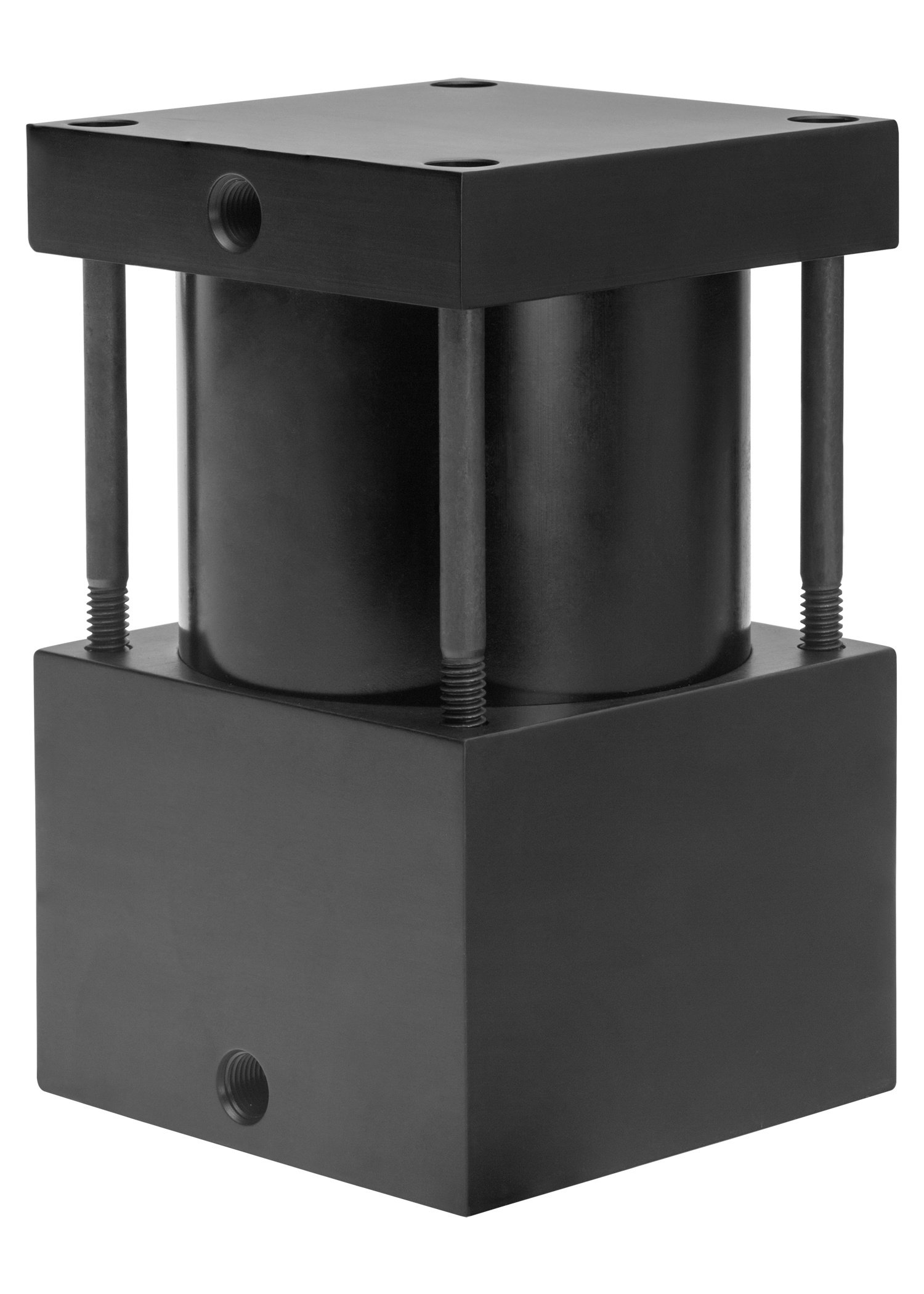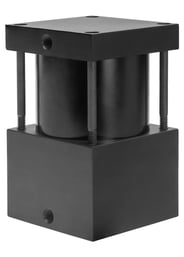
 Hydraulic caliper disc brakes can be an excellent choice for many industrial applications, especially those that require clamping or similar high-force movements. But what if compressed air is your only power source? An air/oil intensifier can convert low-pressure into high pressure in instances where a hydraulic pressure system is not available or where hydraulic pressure is too low.
Hydraulic caliper disc brakes can be an excellent choice for many industrial applications, especially those that require clamping or similar high-force movements. But what if compressed air is your only power source? An air/oil intensifier can convert low-pressure into high pressure in instances where a hydraulic pressure system is not available or where hydraulic pressure is too low.
That means you can spec hydraulic caliper disc brakes even for applications where there will be no hydraulic system pressure source. An air/oil intensifier, also known as an air-to-oil booster, can operate using standard shop air, which is typically 80-100 psi.
How an Air/Oil Intensifier Works
Air-to-oil systems use compressed air to pressurize small amounts of hydraulic fluid — not continuously, but as needed by the cylinder to perform specified operations. This requires only a small oil reservoir. The booster enables the cylinder to generate and hold high pressure for lengthy periods of time, but the process does not cause heat build-up, either under static hydraulic pressure or in the circuit during rapid cycling.
Air/oil intensifiers serve another purpose as well. Compressed air is an ideal driver in low-power applications, but what if you need smoother control of speed or positioning or greater ability to synchronize movements that you’d normally get from pneumatics? That requires higher pressure, and that usually calls for hydraulics. An air/oil intensifier solves this conundrum, by giving you the best of both worlds. Compressed air provides ongoing power, but the oil booster provides greater control.
Why Use an Air/Oil Intensifier?
You can more precisely control speed and positioning. High-pressure hydraulic oil is at the ready when needed, in a compact, reliable, and cost-efficient system.
Using an air-to-oil booster improves the brake cylinder’s direction control, using air valves and an air pressure regulator valve instead of hydraulic valves. This reduces operating cost without sacrificing reliability.
Cylinders can have a very compact design because the booster produces high pressure quickly. There is no need to accommodate larger pump-and-tank systems typically associated with hydraulics.
While air/oil intensifiers can be used to drive multiple cylinders in unison, they are usually paired with a single cylinder. Sequencing is also possible, but this requires multiple intensifiers.
So, the next time you need to convert low pressure to high pressure in your industrial application, consider using an air/oil intensifier rather than a hydraulic pressure system.


